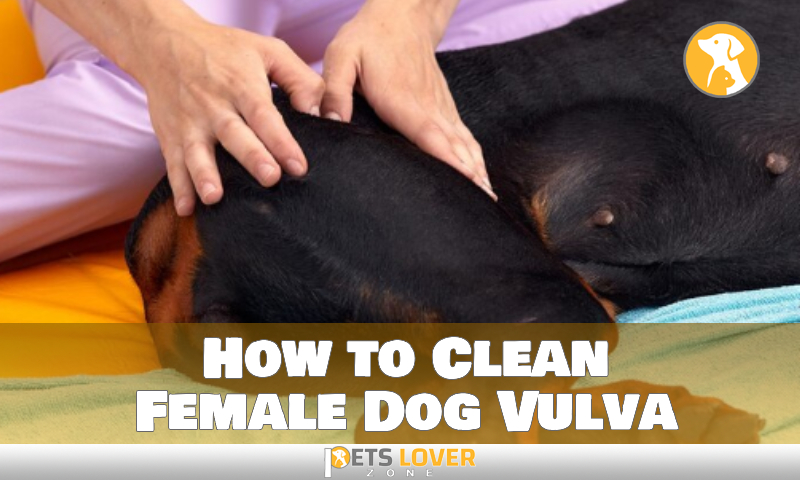To get paint out of dog fur, gently remove any excess paint without pulling or tugging on the fur, then use a pet-safe solution like dish soap or mineral oil to dissolve the paint and rinse it out. These tips and tricks will help you effectively remove paint from your furry friend’s coat without causing any harm or discomfort.
Accidental paint spills can be a common occurrence during DIY projects or home improvements, and dogs, being curious creatures, can end up with paint splatters on their fur. However, it is crucial to act swiftly and carefully to prevent any potential harm to your dog.
In this guide, we will provide simple yet effective methods for removing paint from dog fur, ensuring a safe and pain-free process. By following these steps, you can quickly and efficiently restore your dog’s lovely coat back to its original state.
Assessing The Situation
Assess the situation by determining the type of paint on the dog’s fur. Check the amount of paint present and identify any potential risks or complications. It is important to act quickly and carefully to remove the paint without causing harm to the dog.
Start by gently brushing off any loose or dried paint. Use a pet-safe oil or lubricant to soften the paint and make it easier to remove. Slowly and patiently work through the fur, using a comb or your fingers to gently loosen and lift the paint.
Be cautious not to pull or tug on the fur, as this can cause discomfort or pain for the dog. Once the paint is mostly removed, give the dog a bath using a mild pet shampoo to thoroughly cleanse the fur and remove any remaining residue.
Rinse thoroughly and dry the dog’s fur completely. Regularly check the fur over the following days to ensure all traces of paint have been successfully removed. With a calm and methodical approach, you can effectively get paint out of a dog’s fur while keeping it comfortable and safe.
Preparing For The Process

Preparing for the process of removing paint from your dog’s fur requires gathering the necessary supplies. To ensure a successful outcome, create a calm environment and use protective gear for both you and your furry friend. By having all the required items ready, such as pet-safe paint remover, towels, and a brush, you can minimize stress and make the process smoother.
Additionally, it’s important to choose a location that is easy to clean, such as a bathroom or outdoor space, to prevent further mess. Remember, your dog’s comfort and safety should be the top priority throughout the paint removal process.
Removing Excess Paint
When it comes to removing paint from your dog’s fur, the first step is to remove the excess paint. Begin by gently blotting or scraping off as much paint as possible, being careful not to rub or spread it further.
Use appropriate tools according to the type of paint involved. For water-based paints, you can try rinsing the area with water and using a pet-safe shampoo to break down the paint. For oil-based paints, you may need to consult a professional groomer or veterinarian for guidance.
Remember to be patient and gentle throughout the process, ensuring your dog remains comfortable and stress-free. With these steps, you can effectively get paint out of your dog’s fur without causing any harm or discomfort.
Treating Water-Based Paint
To remove water-based paint from your dog’s fur, start by rinsing the affected area with lukewarm water. Make sure to thoroughly wet the fur to help loosen the paint. Next, use a mild, pet-friendly shampoo to gently work out any remaining paint residue.
Be sure to lather the shampoo well and rinse thoroughly. Once the paint is removed, it’s important to dry your dog’s fur completely to prevent any skin issues. Use a clean towel to blot and absorb as much water as possible.
If your dog tolerates a blow dryer, use the lowest heat setting to speed up the drying process. Remember to keep the blow dryer at a safe distance to avoid causing any discomfort. By following these steps, you can effectively get paint out of your dog’s fur and keep them clean and comfortable.
Dealing With Oil-Based Paint
To remove oil-based paint from your dog’s fur, apply a suitable solvent or paint thinner. Use a soft cloth to gently scrub the affected area. Repeat the process until the paint is completely removed.
Handling Acrylic Or Latex Paint
To remove paint from your dog’s fur, mix dish soap with lukewarm water. Apply the solution to the paint stain and gently scrub the area. Rinse and repeat this process until the paint is no longer visible. It’s important to use a gentle touch to avoid irritating your dog’s skin.
Additionally, you can use a comb or brush to help loosen any remaining paint. Remember to be patient and take your time to ensure a thorough removal. Handling acrylic or latex paint on your dog’s fur can be challenging, but with these steps, you can effectively get rid of the paint without causing discomfort to your furry friend.
Addressing Stubborn Or Dried Paint
To tackle stubborn or dried paint on your dog’s fur, first use a fine-toothed comb. This will help loosen the dry paint and make it easier to remove. Another option is to apply petroleum jelly or olive oil to the affected area.
These substances will soften the paint, making it more malleable. Once the paint is softened, you can gently remove the flakes using a comb or brush. Be patient and take your time, as forcing the paint out may cause discomfort for your furry friend.
Remember to reward your dog with treats and praise throughout the process to keep them calm and cooperative. With these steps, you can effectively remove paint from your dog’s fur without causing any harm.
Ensuring Comfort And Well-Being
Maintaining your dog’s well-being is crucial when dealing with paint in their fur. Ensure their comfort by addressing any skin irritations or redness. Keep a close eye on your furry friend for signs of discomfort or distress. If any issues arise, it’s important to seek veterinary guidance.
By following these steps, you can effectively remove paint from your dog’s fur while prioritizing their comfort and overall health. Remember, your dog’s well-being should always be your top priority in any situation.
Reinforcing Preventive Measures

Reinforcing preventive measures is an essential step in keeping your dog away from painted areas. Regular grooming sessions are crucial to preventing future incidents. It helps to keep your dog’s fur clean and free from paint residue. Additionally, using coverings or barriers can protect surfaces from accidental paint splatters.
These measures not only prevent paint from getting on your dog’s fur but also maintain the cleanliness and integrity of your home. By following these guidelines, you can ensure that your dog remains safe and free from any paint-related mishaps.
FAQ
What Happens If Paint Gets On My Dog’s Fur?
If paint gets on your dog’s fur, gently remove it with mild soap and warm water. Avoid using harsh chemicals and consult a vet if necessary.
How Do You Get Dried Paint Out Of Fur?
To remove dried paint from fur, gently scrape off as much as possible with a dull knife. Then, wash the area with warm soapy water and pat dry.
How Do You Get Interior Paint Out Of Dog Fur?
To remove interior paint from dog fur, follow these steps: 1. Dampen a cloth or sponge with warm water. 2. Gently dab the paint-stained fur to soften the paint. 3. Use a pet-friendly soap or shampoo to lather the fur and work the paint out.
Conclusion
Removing paint from your dog’s fur can be a challenging task, but with the right techniques and products, it can be accomplished effectively. Always prioritize your dog’s safety and comfort throughout the process. Start by assessing the situation and determining the type of paint involved.
Use appropriate methods like trimming, washing, and using pet-friendly solvents to gently remove the paint. Remember to consult a veterinarian if necessary, especially if your dog exhibits any unusual behavior or experiences discomfort. Regular grooming and maintenance can help prevent paint mishaps in the future.
By following these steps and being prepared, you can ensure that your furry friend remains happy and pain-free. So don’t panic if your dog gets paint on their fur – with a little patience and care, you can easily resolve the situation and restore your dog’s coat to its natural beauty.






